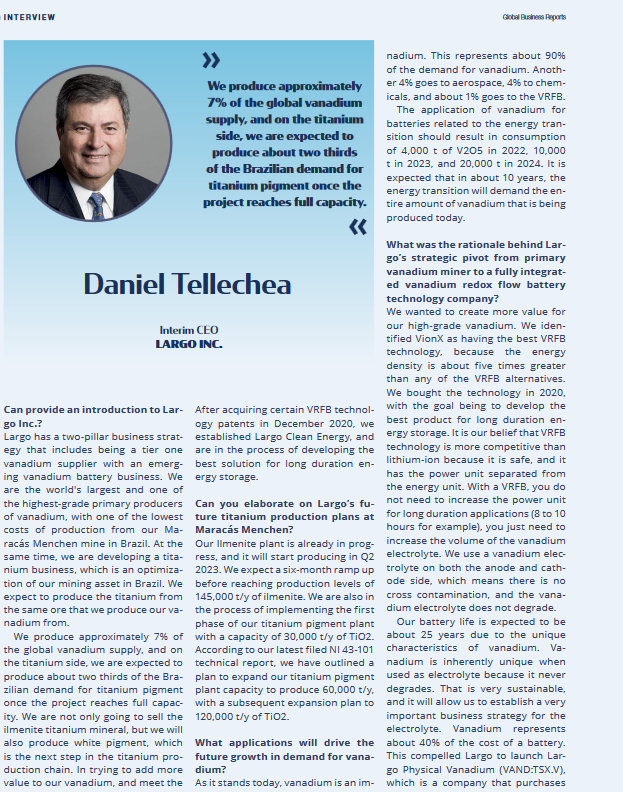kha341 wrote: https://www.gbreports.com/files/pdf/_2023/Ontario-Mining-2023-hires-final.pdf

In Brazil’s Bahia State, Largo has its
Maracs Menchen mine, which is the
world's largest primary producer of
vanadium. It is also one of the highest-
grade vanadium assets, and its cost of
production is comparatively low. The
company is now developing a titanium
business, which is an optimization of
its Maracs Menchen asset. Largo ex-
pects to produce titanium from the
same ore the vanadium is produced
from to provide a new revenue stream
and so that operational costs will be
optimized. Expectations are that the
mine will produce about two thirds of
Brazilian demand for titanium pigment
once the project reaches full capacity.
“According to our latest filed NI 43-101
technical report, we have outlined a
plan to expand our titanium pigment
plant capacity to produce 60,000 t/y,
with a subsequent expansion plan to
120,000 t/y TiO2,” Daniel Tellechea, In-
terim CEO of Largo said.
The other pillar Largo’s business cen-
ters around is the emerging vanadium
battery business, based in Massachu-
setts. While Largo is well positioned as
the preferred vanadium supplier for
the aerospace market, there is poten-
tially a much larger market stemming
from the application of vanadium for
batteries related to the energy tran-
sition. Tellechea highlighted market
forecasts that vanadium battery de-
mand should result in consumption
of 4,000 t/y V2O5 in 2022, 10,000 t/y
in 2023, and 20,000 t/y in 2024. Given
the rapid growth in demand, Tellechea
is determined to ensure Largo is able
to capitalize on the growing market,
and consequently acquired a vanadi-
um redox flow battery technology. Tel-
lechea described his reasoning: “We
wanted to create more value for our
high-grade vanadium, and our theory
was that it is perfect to be deployed
into batteries for energy storage. We
identified VionX as having the best
VRFB technology, because the energy
density is about five times greater than
any of the VRFB alternatives. By having
more energy, the number of compo-
nents per kilowatt hour is lower, and
that effectively means one can lower
costs with fewer components needed.”

